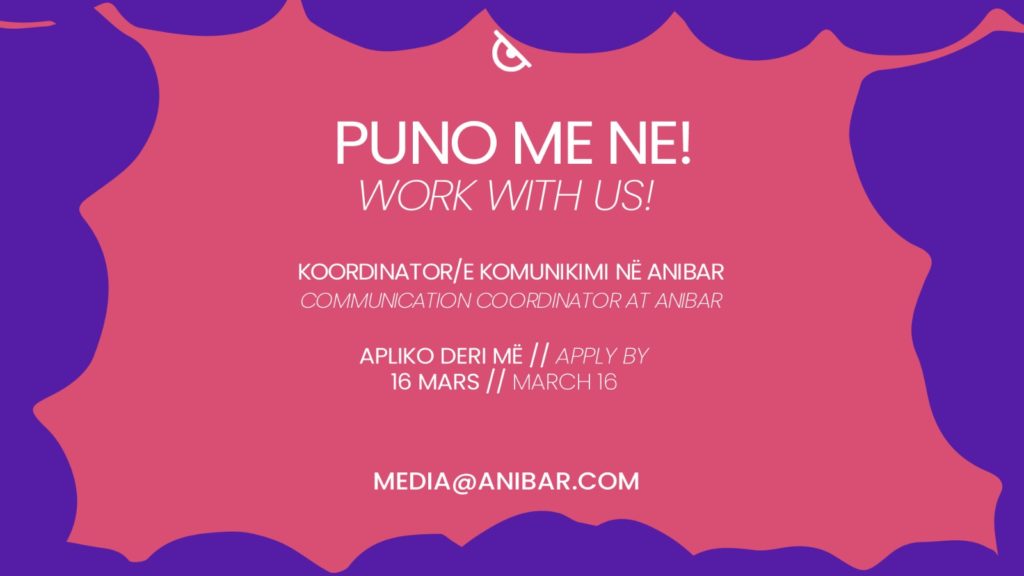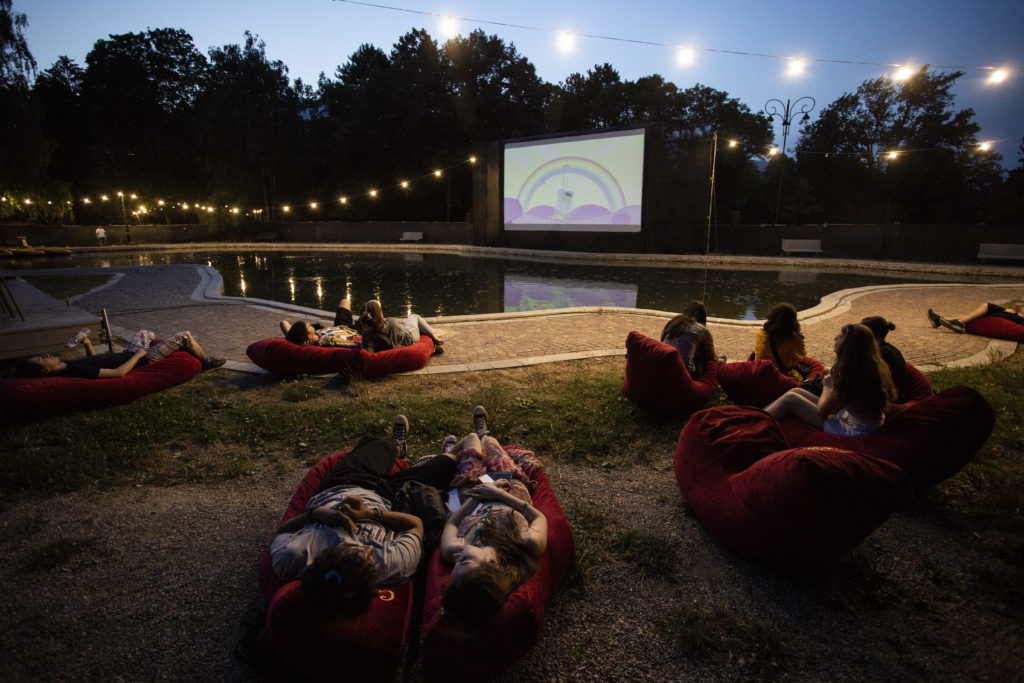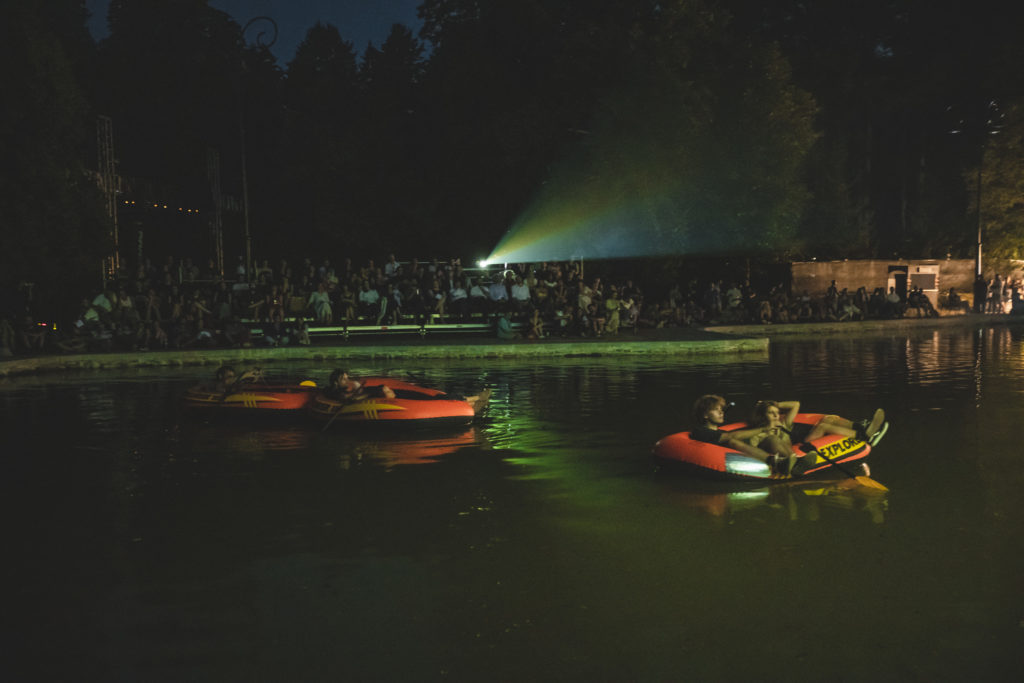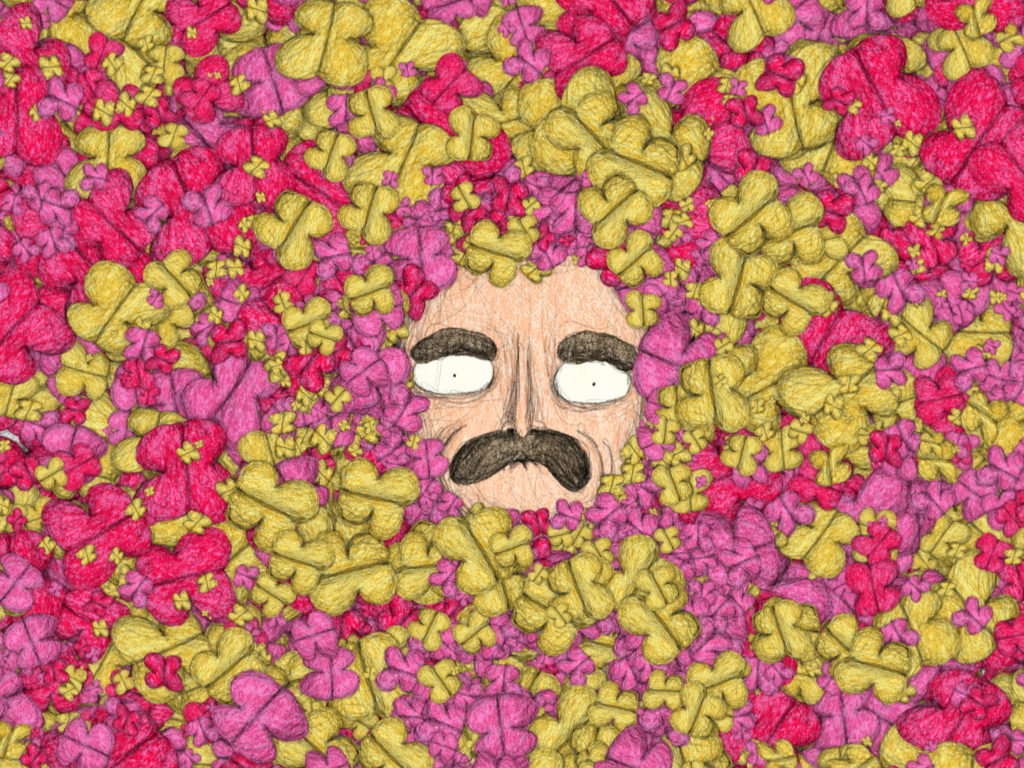Creating Locally: Hopes and Fears

Enxhi Noni
Considering the possibility of exploring Rugova’s breathtaking mountains in the winter or visiting Anibar Animation Festival in the summer, the city of Peja does not seem to be more than just an unsuspecting location. What is truly striking about Peja is the chaotic rural setting located in the middle of one of the most scenic views of Kosovo. Considering the natural slow-paced routine of the citizens, you expect Anibar to engage all local attention and involvement in the course of one week. This way, it is only natural to consider Anibar as a tool for the cultural and social development of the city as the festival uses its international status as a meeting point between the local community and foreign audiences. However, the terms “creating” and “international” take different meanings in the heart of Peja. Being artistically productive under such circumstances puts into question one’s capacity to impact the surrounding environment, to overcome the limits within the country, and even to overpass one’s own identity.
While flipping through the catalog of the festival, the Balkan program is easily noticeable among other competitions. What may be passed over is the fact that out of 10 films in the selection, there is only one Kosovar artist with her animated short film. When asked, the festival’s team noted that all competitions (except international) are accessible to local artists, even though their work usually meets only the Balkan competition’s requirements. Anibar’s Program Coordinator, Arba Hatashi, listed a set of criteria applied to the films during the selection process, despite country of origin. While it might seem more natural to prioritize local artists, she noted that the greatest importance is given to quality works that comply with festival’s artistic standards.
Regardless the festival’s openness to all Kosovo and Albania based animation film enthusiasts, it was genuinely surprising to understand that out of approximately 1000 movies submitted this year to Anibar’s 10th edition, there was only one submission made by a local artist – Rron Ismajli’s “N’Kornizë”. Vullnet Sanaja, Anibar’s Executive Director, mentions her in his foreword: as a former participant of Anibar’s activities, Ismajli is now the first Kosovar woman to hold a degree in animation. Her short film, telling the story of a boy who struggles to understand that things around him will not change if he is not ready to change himself, will have its premiere this Friday.
Despite the continuous efforts, Anibar’s team considers Kosovo’s lack of education in the field of animation as crucial. Even though two years ago the Anibar Animation Academies in Peja and Prishtina were established, a considerable gap between Kosovo’s isolated borders and the extensive international cultural practices still exists. A significant take was projected on the issue of understanding animation as an art of its own, an expression of one’s self. Different remarks from the staff brought into light a common perception of animated films as an exclusively children entertainment, thus underestimating the medium’s potential to be a sheer form of art. While most of these comments were mentioned on a humorous note, it is not hard to understand the difficulty of facing such problems throughout the whole year of preparations for a one-week festival’s run. As a result, many gifted and passionate artists are constantly struggling with this distressing mindset and putting tremendous efforts towards their breakthrough in the animation world.
As part of Anibar’s 10th edition, Joan Kamberaj and Visar Arifaj were the ones to open “A Balkan Tale” presentations on Tuesday, a series of talks held by regional artists in order to promote their work and bring it closer to the audience. An important approach to the presentation consisted of the correlation between animation and political discourse, which serves as an example of the social responsibility of the artist. By going beyond this critical aspect, it is important to question the use of international influence as a reference point. Both Joan Kamberaj and Visar Arifaj agree that acknowledging international artists is useful for one’s own artistic development since they create quality standards that must be followed and enhanced. According to Kamberaj, the international category is only useful for statistical purposes since the quality of one’s work does not depend on the author’s country of origin. Furthermore, he considers local artists with an international status as role models who motivate others to pursue their artistic path. On the other hand, Arifaj summarizes the international category as the first step to great achievements – but it does not mean that one’s artistic development stops there. On the contrary, you easily risk succumbing into the commercial void by lacking creativity and/or originality.
But what about the actual creative possibilities and personal initiative of the local artists? Ana Nedeljković, a Serbian visual artist, author of installations and animated films, in the film Untravel (co-directed with Nikola Majdak Jr.), tackles the issue of living in an isolated country and always dreaming of leaving forever for a perfect world called “Abroad”. Inspired by her own youth spent in Belgrade, she considers confronting the concepts such as “country-abroad” and “local-global” as a mistake. However, there are different elements that might justify the opposition. Mentality obstacles (created by a particular social situation of such once isolated countries), the not-so-natural creation process (the creative tools are not always accessible if you are coming from the Balkans) and the difficulty of getting out of a comfortable social bubble (by pushing yourself against your own fellow local colleagues) are all taken into consideration. According to Nedeljković, the only way that you can create internationally is by dealing with local stories, but handling them with such a care throughout development process that everything local is always understandable and comprehensible to the foreign audience, no matter the cultural differences.
An artist’s most dangerous enemy remains one’s mental borders. The only solution seems to be the investment done in one’s efforts and education. Anibar uses its own strategies to initiate local creative activism, not only by providing the only animation education program in Kosovo. Following a series of trainings, workshops and masterclasses and by mixing international and regional actors during the festival, Anibar’s team wishes to inspire and empower a love for civic engagement through art and culture. Our hope, they say, lies in the new generation of artists growing up here and creating new wave locally.
This article is an output of the Film Criticism and Journalism workshop which is being organized within the project “Development of animation culture between Western Balkans and Visegrad Group” implemented by Anibar and Civil Association for the Support of the Animated Film, Primanima Ltd.,Institute of Cultural Studies, Faculty of Humanities, Marie Curie-Skłodowska University in Lublin, The Academy of Performing Arts in Prague – Film and TV School – Department of Animated Film.
The project is co-financed by the Governments of Czechia, Hungary, Poland, and Slovakia through Visegrad Grants from International Visegrad Fund. The mission of the fund is to advance ideas for sustainable regional cooperation in Central Europe.





